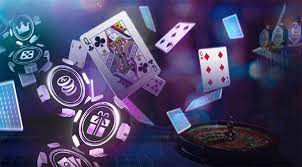Slot machines, the beloved icons of casinos worldwide, hold a unique place in the hearts of gambling enthusiasts. With their flashing lights, enticing sounds, and the promise of life-changing jackpots, slots have become synonymous with bibir69 slot and chance. But what is it about these machines that captivate players so thoroughly? Let’s delve into the world of slots to uncover the magic behind their allure.
A Brief History
The roots of the modern slot machine can be traced back to the late 19th century when a mechanic named Charles Fey created the first mechanical slot machine in 1895. Named the Liberty Bell, this groundbreaking invention featured three spinning reels adorned with symbols like horseshoes, diamonds, spades, hearts, and, of course, the Liberty Bell.
From these humble beginnings, slot machines evolved significantly over the years. The introduction of electromechanical machines in the 1960s paved the way for more complex gameplay and the incorporation of innovative features. With the advent of digital technology, video slots emerged, offering even more diverse themes, interactive bonus rounds, and stunning visual effects.
The Anatomy of a Slot Machine
At its core, a slot machine is a device that allows players to wager money on the outcome of spinning reels. The basic components include:
- Reels: Traditionally, slot machines featured physical reels with symbols printed on them. In modern video slots, these reels are simulated on a screen, but the concept remains the same.
- Symbols: These are the images or icons that appear on the reels. Common symbols include fruits, playing card suits, lucky sevens, and themed characters.
- Paylines: These are the lines across the reels where winning combinations are formed. Traditional slots typically had a single payline, but modern machines can have multiple paylines, sometimes up to hundreds or even thousands.
- Bet size: This refers to the amount of money wagered on each spin. Players can usually adjust their bet size using buttons or a touchscreen interface.
- Payout table: This displays the winning combinations and their corresponding payouts. It also often includes information about special features and bonus rounds.
The Psychology of Slot Machines
Slot machines are carefully engineered to maximize player engagement and enjoyment. Behind their flashy exterior lies a sophisticated system designed to keep players entertained and coming back for more. Here are some key psychological factors at play:
- Reinforcement: Slot machines use a principle known as intermittent reinforcement, where players are rewarded unpredictably. This creates a sense of excitement and anticipation, as players never know when they might hit a winning combination.
- Near misses: Slot machines are programmed to occasionally display “near misses,” where the reels stop just short of a winning combination. These near misses can trick players into thinking they were close to winning, encouraging them to continue playing in the hopes of achieving a jackpot.
- Lights and sounds: Slot machines are designed to stimulate the senses with flashing lights, catchy music, and sound effects. These sensory cues create a highly immersive experience that draws players in and keeps them engaged.
- Progression: Many slot machines feature a progression system where players can unlock new levels, bonuses, or special features as they play. This sense of progression gives players a goal to strive for and incentivizes them to keep spinning the reels.
Conclusion
Slot machines have come a long way since their humble beginnings, evolving into sophisticated gaming devices that offer endless entertainment and excitement. Whether you’re a casual player looking for some fun or a seasoned gambler chasing the elusive jackpot, slots have something to offer everyone. So the next time you step into a casino, take a seat at your favorite slot machine and prepare to embark on an unforgettable journey into the heart of gaming.



